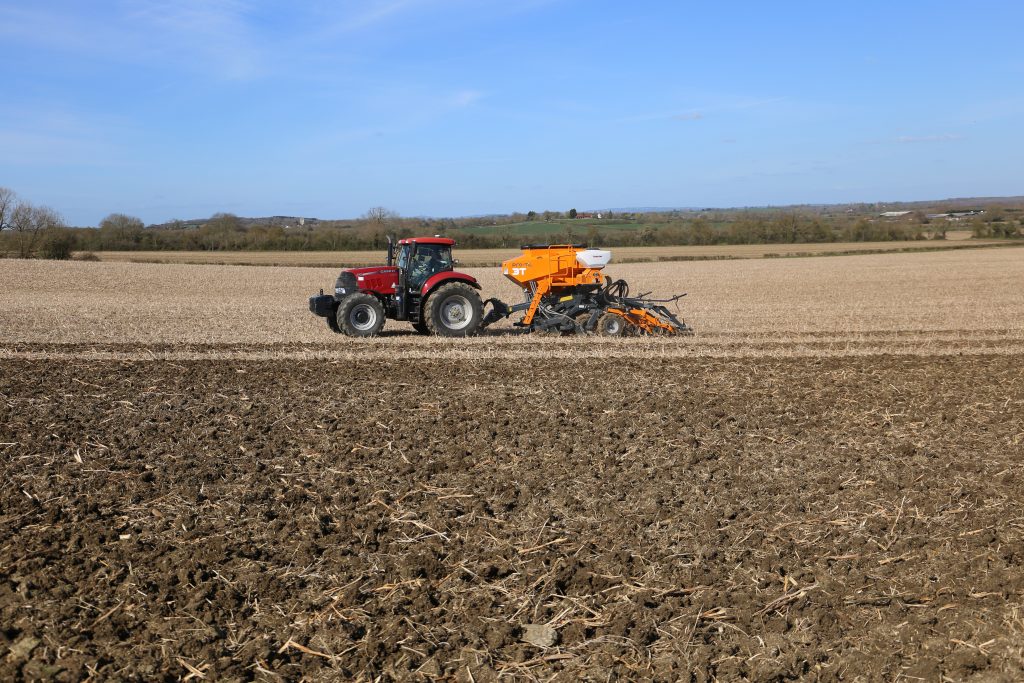Winter Wheat
This month we’ve cracked on with the start of our Spring spraying programme. All of our Wheat has received its T0 fungicide including PGR and we added Spitfire where necessary to tidy up some cleavers.
For our hybrid Wheat variety trials, we chose a robust PGR to support the very strong, early vigour – a very different growth habit to that of our conventional Wheat!
Our second dose of Nitrogen went on, bringing us up to a total of 140kg/ha applied so far. All of the Wheat is looking good on farm and our extensive trial plots will make for interesting discussion during our Open Days next month.

Our Wheat seed rate trials receiving their T0's
Oilseed Rape
Looking over our OSR at the end of February left me with initial concerns after a large influx of pollen beetle. Since then March came to the rescue with a cool and windy first half which appeared to hinder movement. At my own delight and that of my pocket, I got away with not needing to apply any insecticide – a top result!
Shortly after we applied the final dose of Nitrogen the Expedient came into flower on the 23rd of March. The same time last year we were just recovering from the Beast from the East; it’s funny to think how years vary so dramatically.

Our 66cm row spaced OSR soon overtook our time lapse camera - taken 18th March
Spring Beans
The drying winds during the last week of March saw us drill the remainder of the Lynx spring beans. All went into cover crops, where we used different methods of destruction – grazing, frost rolling and glyphosate. Using the Mzuri Pro-Til 3T, I drilled at 2 inches into preserved moisture. With what’s been a relatively dry spring so far, we’re starting to get the sense its going to be another year where moisture remains a precious commodity.

The Mzuri Pro-Til 3T putting Spring Beans into Radish cover crop stubble
Spring Wheat
We’ve added another Spring crop in this year’s arsenal, Spring Wheat – which will have been grown on this farm for the first time since 2013. With everything we’ve learnt since then and with some strong new varieties coming through, we thought it would be interesting to revisit the forgotten crop. Opting for KWS Cochise, I hope to draw on its high yield potential, combined with its robust agronomic traits.
Along with 150kg/ha of DAP down the front leg, the wheat was sown at 400 seeds/m2. Following shortly after with an application of Sulfan, ahead of the rain, I ensured there was half of the crop’s Nitrogen requirement in the seedbed pre-emergence. This should get it off to a good start and we’re excited to see how this old friend performs on what’s now almost a totally different farm.

For the first time since 2013, Spring Wheat is being established on the farm